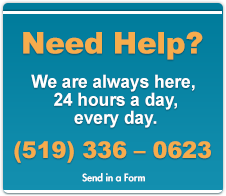We work alongside families and communities to help children and youth be safer and live their lives well.
Positive Parenting & Safety Tips
Safety Tips
- Summer Safety
- Fire Safety
- Window Safety
- Road Safety
- Computer Safety
- Internet Safety
- Playground Safety
- Home Alone Safety
- Safe Sleeping Practices
- Back to School Safety
- Halloween Safety
Positive Discipline
- Raising a Self-Discipline Child: Discipline that Works
- The discipline tool kit: Successful strategies for every age. Baby – Grade school
- Positive Parenting Teens
- Positive Parting Tweens
- Spanking, grounding, and yelling: Does old-fashioned discipline work?
- Attachment Parenting
- Your top 10 discipline dilemmas – solved
Safety Tips
Here are some safety tips for parents and caregivers:
Summer Safety
Temperatures across Ontario soared to the high 30s last month, putting many people at risk for heat stroke. Children are especially at risk for heat exhaustion and heat stroke as a child’s body cannot regulate temperature as well as an adult’s. With plenty of hot days left in the summer, here are some tips for staying safe in the heat:
- Dress your child in light, loose clothing to allow air to circulate.
- Drink plenty of water – sweating can quickly deprive your body of fluids.
- Apply and re-apply sunscreen frequently – sweat can loosen sunscreen from the skin.
- Limit the amount of time your child spends outdoors and encourage frequent indoor breaks.
- Visit your public library or community centre to take advantage of air conditioning.
For more tips on staying cool, visit Health Canada.
Fire Safety
In the summer, many families enjoy the warm weather by hiking and camping in Ontario’s parks. Unfortunately for campers, summertime is also peak time for forest fires. Follow the tips below to prevent forest fires and keep children safe around the campfire:
- Always ensure that your campfire is built on dry soil (never on grass) and is surrounded by rocks.
- Start small and don’t over build. Your fire should be just large enough for your cooking or marshmallow-toasting needs.
- Mind the perimeter. Keep children a safe distance (about 1 metre) away from open flames.
- Keep a bucket of water or dirt next to the fire to put out any stray flames.
- Never leave a fire unattended.
- When putting a fire out, soak the entire surface so that every stick, rock and patch of dirt is wet.
For more safety tips, visit the Health Canada page or the Canada Safety Council.
Window Safety
- Keep windows closed or open three to 10 centimeters;
- Install window guards or window stop sin every window to prevent children from opening windows;
- Move cribs, beds other furniture, bikes or other objects children can climb on or and over away from windows and balcony railings;
- Keep doors to balconies locked; and
- Always keep an eye on young children in the home
Road Safety
- Teach younger children proper road safety rules such as: cross at designated crosswalks or traffic lights;
- Remind your child to always look at the driver for a signal before crossing, look all ways before crossing the road and walk, never run, to the side of the road when the bus stops.
- Ensure children wear bright or light colored clothing or reflective strips, when walking in dusk or darkness so drivers can see them.
- Accompany any children under nine years old on the street as younger children’s judgment and perceptual skills are skill developing.
- Ensure children are secured with safety harnesses and/or child safety seats. Never leave children unattended in a vehicle.
Computer Safety
- Learn about what your child is doing on the Internet, web sites, chat rooms, e-mails and messages.
- Set reasonable guidelines for children to use the internet and keep the computer in a family room.
- Ensure children do not give our personal information online such as address, phone number, or school name or location and to use a screen name.
- Caution children never to agree to meet anyone from a chat room in person.
- Protect children from on-line predators by keeping communication with kids open, monitoring the websites they visit, blocking potential hazards and locating the computer in a common area where usage can easily be monitored.
Internet Safety
The Kids Internet Safety Alliance launched a series called Virtually Safe Videos, available for viewing online; to educate parents on the steps they can take to keep kids safe. This video was funded in part by Ontario’s Ministry of Education and helps parents and caregivers understand the most common places that kids access on the Internet and some of the dangers children may encounter when networking online. Click here to view videos.
- Become familiar with the Internet forums and applications that your child/adolescent uses (IM, P2P, Blogs)
- Explain to your child/adolescent that his/her Internet activity will be monitored. S/he should have no expectation of privacy on the computer
- Use anti-virus and filtering software and keeping all software up to date
- Review sites your teen visits and ensuring online diaries and profiles do not contain identifying personal information
- Reinforce the public nature of the Internet Once pictures or information are sent over the Internet, control over what happens to them is lost. Be mindful of what is sent.
- Monitor webcam use Inform your adolescent that pictures can be captured (freezing photos, recording video) by others without their knowledge. Be mindful of how the webcam is used and disconnect when not in use. (from Cybertip.ca)
Playground Safety
- On the playground, parents can check their children for loose clothing, scarves or strings that can get struck;
- Check the playground equipment before your child plays and supervise your child closely.
Home Alone Safety
- After school, make sure your child is safe and well cared for.
- Consider the child’s age and development level, the safety of the home environment and neighborhood and accessibility of parents/adults/friends/and neighbors if assistance is required when planning to leave a child under the age of 16 unattended or with a babysitter.
- Teach young children some basic information by age five such as their name, address and phone number and parents’ or guardians’ full names as well as their contact information, a work number.
- Give your daycare provider or school a list of safe people who can pick up your child.
- Children should not answer the door or telephone when parents are not at home.
- Local community services have additional programming and activities for children during the break and can provide information on daycare options.
- Trusted neighbors, neighborhood associations, family or friends may collaborate on organizing activities or supervising children.
- When hiring a baby/child-sitter, parents should check references, consider the baby/child-sitter’s age, knowledge of child care and training and assessing caregiver to child ratios.
Safe Sleeping Practices
Helpful information coming soon for this section.
Back to School Safety
Here are some tips for parents and caregivers:
- Playground safety: On the playground after school, ensure children have no loose clothing, scarves or strings that can get stuck; check the playground equipment before children play and supervise them closely.
- Road safety: Teach younger children proper road safety rules and accompany any children under nine years old on the street as younger children’s judgment and perceptual skills are still developing.
- Car safety: Ensure children are secured with safety harnesses and/or child safety seats. Never leave children unattended in a vehicle.
- Computer safety: Protect children from on-line predators by keeping communication with kids open, monitoring the websites they visit, blocking potential hazards and locating the computer in a common area where parents can monitor usage easily.
- School bus safety: Remind your child to always look at the driver for a signal before crossing and look all ways before crossing the road.
- Window safety: Safe-guard windows to prevent children from accidental falls from windows and balconies.
Halloween Safety
To help parents and children prepare for Halloween, Safe Kids Canada recommends:
- Select children's costumes with bright colours whenever possible and avoid visibility reducing face masks
- Look left, look straight into the intersection, look right, and repeat before crossing the street while trick-or-treating
- Do not cross between parked cars or other obstacles, cross at crosswalks or intersections
- Stay on the sidewalk or path when walking from one house to another
To help drivers prepare for Halloween, Safe Kids Canada recommends:
- Drive slowly in residential areas where children are more likely to be trick-or-treating
- Watch out for kids, many of whom may be wearing costumes with visibility reducing features
- Reduce your distractions and stay alert
- Frequently check your speed and reduce it during peak trick-or-treating hours


